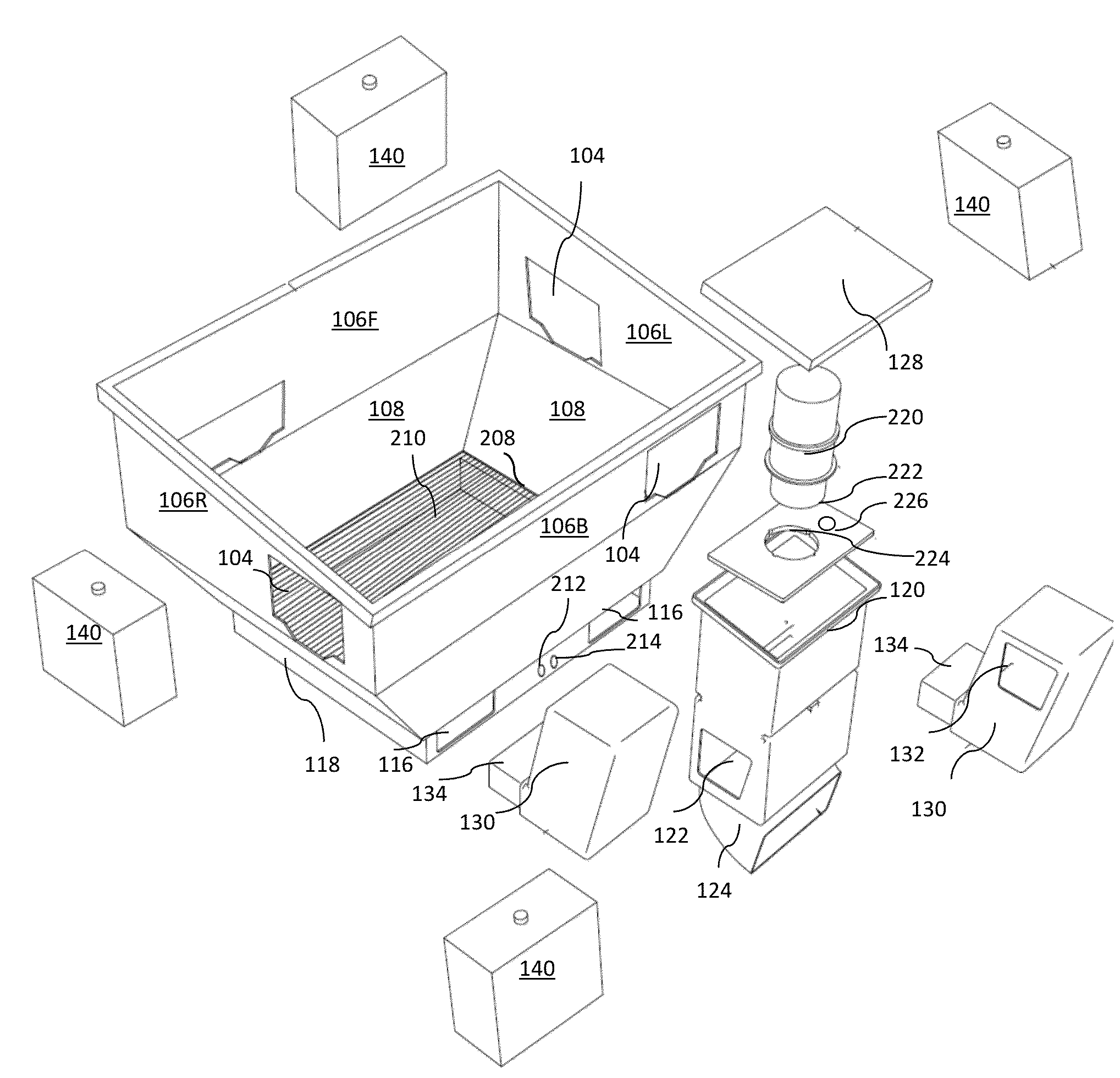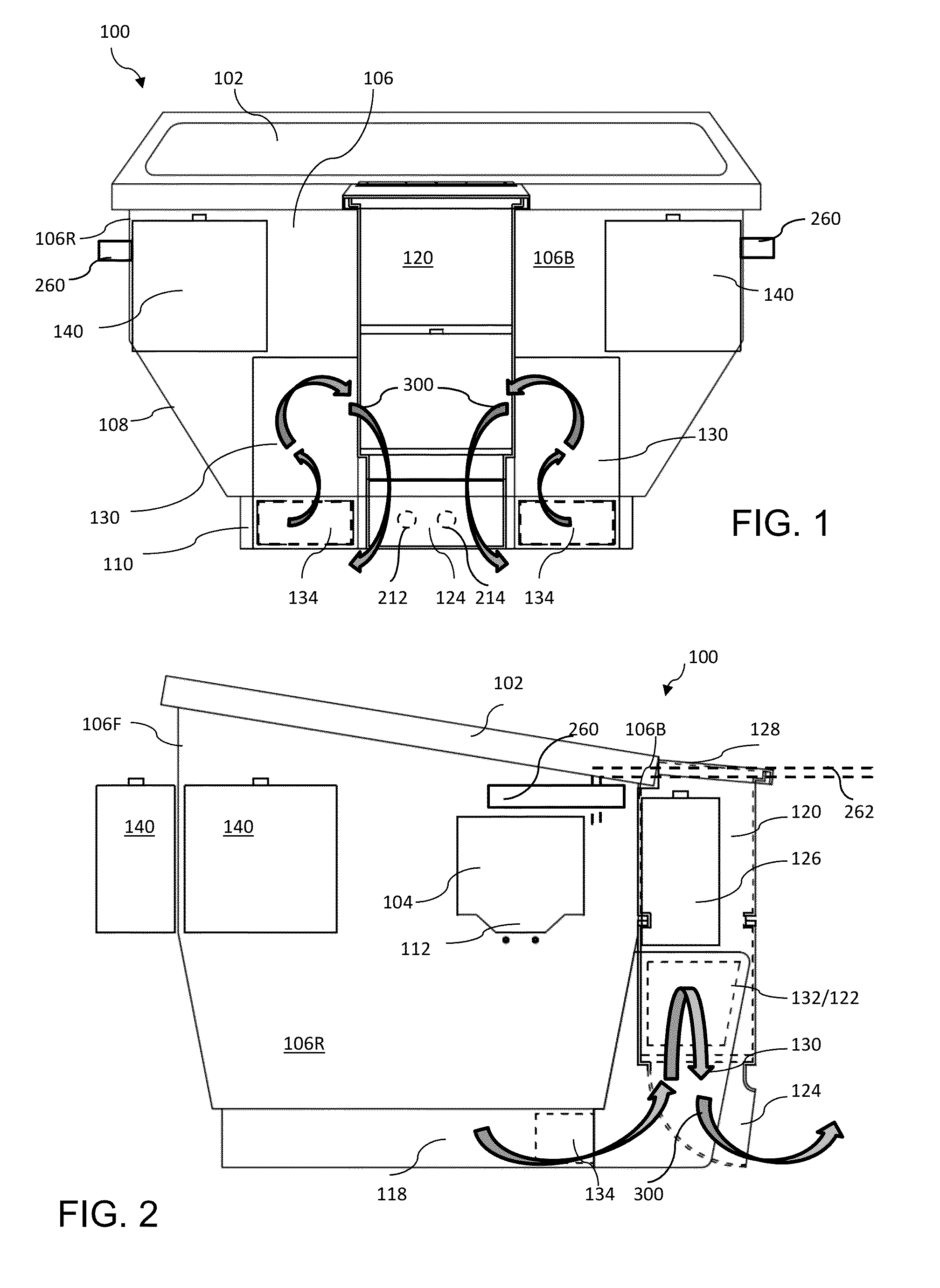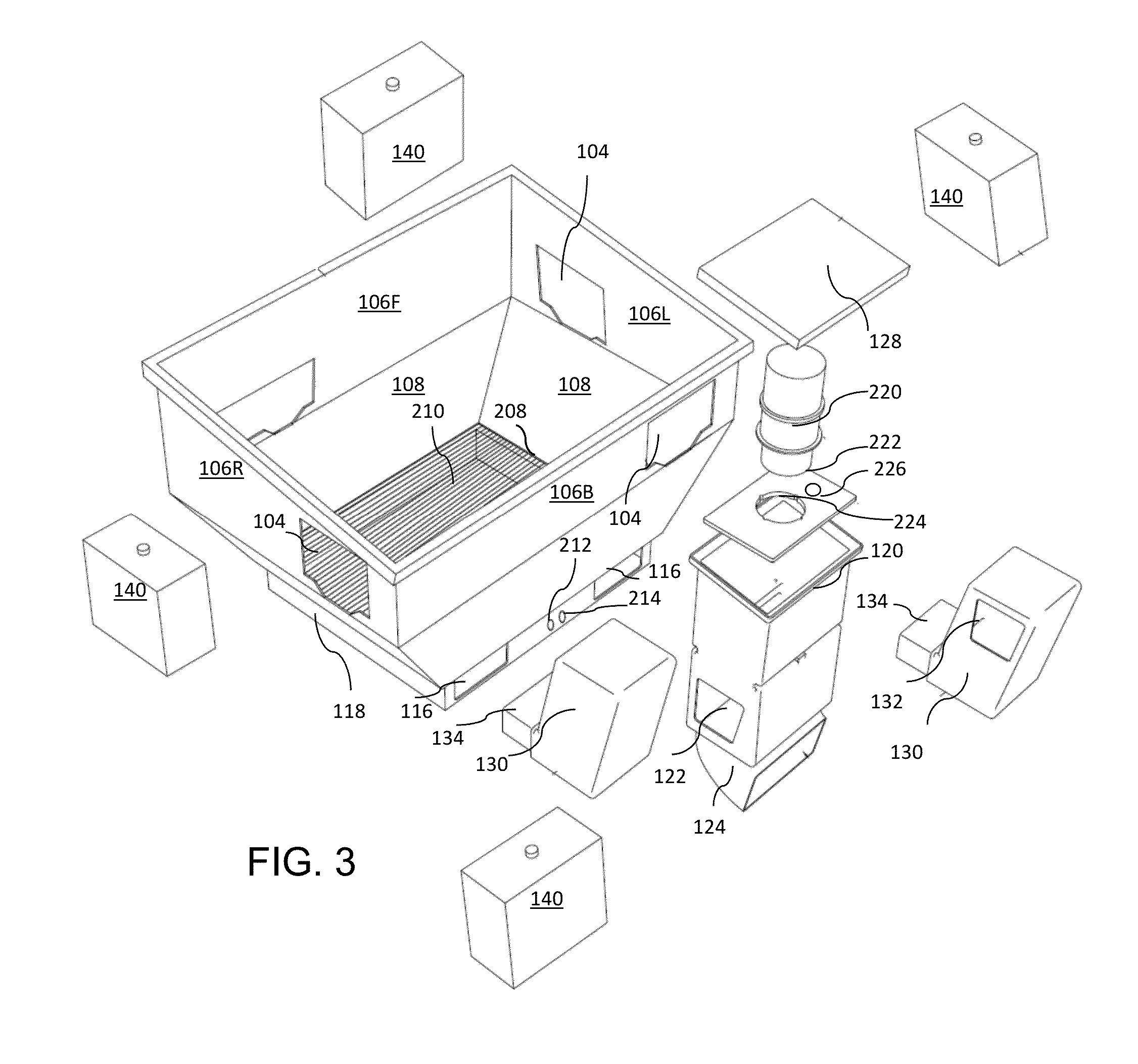System for removal of contaminants in water
a technology for water contaminants and water systems, applied in water cleaning, water separation processes, swimming pools, etc., can solve the problems of contaminating water, affecting the placement of water bodies, and affecting the effect of water quality, so as to facilitate the placement
- Summary
- Abstract
- Description
- Claims
- Application Information
AI Technical Summary
Benefits of technology
Problems solved by technology
Method used
Image
Examples
Embodiment Construction
[0019]As illustrated in FIGS. 1-3, the skimmer assembly 100 for removal of contaminants from water comprises a generally rectangular enclosure 106 with an openable lid 102 and at least one inlet 104 near the top for admitting water into the interior of the enclosure. At least one intake module 130 is attached to the enclosure with a conduit 134 at its lower portion extending through an opening 116 near the bottom of the enclosure. In the illustrated embodiment, two inlet modules 130 are shown. An upper port 132 formed on one side of the intake module. A pump module 120 is attached to the outer surface of the enclosure adjacent to the intake module(s). The pump module 120 has a side port 122 that matches the upper port(s) 132 of the intake module 130 so that the pump module 120 and the intake module 130 are in fluid communication through the ports 122 and 132. The pump module 120 has an outlet channel 124 at its lower portion to direct water away from the enclosure.
[0020]The enclosur...
PUM
| Property | Measurement | Unit |
|---|---|---|
| vacuum | aaaaa | aaaaa |
| size | aaaaa | aaaaa |
| area | aaaaa | aaaaa |
Abstract
Description
Claims
Application Information
 Login to View More
Login to View More - R&D
- Intellectual Property
- Life Sciences
- Materials
- Tech Scout
- Unparalleled Data Quality
- Higher Quality Content
- 60% Fewer Hallucinations
Browse by: Latest US Patents, China's latest patents, Technical Efficacy Thesaurus, Application Domain, Technology Topic, Popular Technical Reports.
© 2025 PatSnap. All rights reserved.Legal|Privacy policy|Modern Slavery Act Transparency Statement|Sitemap|About US| Contact US: help@patsnap.com



